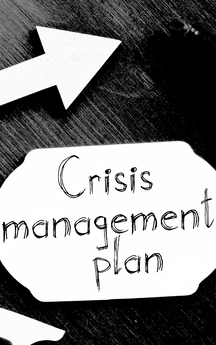
In today's interconnected and unpredictable world, we all need to be equipped to manage crises effectively. This is true for individuals, communities, and organizations alike.
Mastering crisis communication is an invaluable skill in these circumstances. This specialized area within communication studies deals with the exchange of information during emergencies or incidents that could potentially harm people, organizations, or society. In our current times, adept crisis communication can sway public perception, maintain good reputations, and minimize the damaging consequences of a crisis. Ultimately, this skill is crucial for thriving in a constantly changing world. The History of Crisis Communication Crisis communication has evolved significantly since its inception. It originated from public relations and journalism, primarily serving as a tool to manage reputational threats due to product failures, environmental disasters, or political scandals. During this period, traditional media channels such as newspapers, radio broadcasts, and television news were the primary vessels for disseminating crisis-related information. The proliferation of social media and digital communication has revolutionized crisis communication. However, while these platforms have democratized information access and improved the speed and reach of crisis communication, they have also introduced challenges related to misinformation and fake news. Defining Crisis Communication At its core, crisis communication involves a strategic process of communicating with various stakeholders during a crisis. The goal is to manage the narrative, counteract misinformation, and restore trust and confidence. Crises can emerge in diverse forms, including but not limited to natural disasters, cybersecurity attacks, corporate malfeasance, and public health emergencies. Typically, crisis communication unfolds in three stages: the pre-crisis phase, where potential threats are identified, and plans are formulated; the crisis response phase involving immediate actions and communication following a crisis; and the post-crisis phase, where learning, recovery, and reputation-rebuilding activities take place. Unfortunately, many organizations don’t have a plan in place and don’t act on learnings post-crisis. The Evolution of Crisis Communication Strategies In the past, crisis communication strategies were largely focused on controlling the flow of information and preserving the organization's image. However, social media and digital platforms have significantly altered this approach. Information control has given way to transparency and engagement as public expectations have changed. Contemporary crisis communication strategies emphasize the importance of transparency, authenticity, and empathy. As a result, it's now critical for organizations to engage with stakeholders, exhibits genuine care, and communicate clear plans for resolving the crisis. Crisis Communication in 2023 Crisis communication in 2023 continues to evolve, with technology playing a significant role in reshaping strategies. Artificial Intelligence (AI) and automation are being deployed to monitor potential threats, facilitate real-time communication, and automate certain aspects of crisis response. However, the increased use of technology also brings with it challenges related to data privacy and cybersecurity. Moreover, there is a growing focus on proactive crisis prevention and readiness, highlighting that averting a crisis or being adequately prepared for it can be as crucial as managing it effectively when it occurs. Best Practices for Effective Crisis Communication in 2023 In 2023, effective crisis communication necessitates a comprehensive and well-thought-out crisis communication plan. This plan should leverage social media and digital channels to deliver timely updates and facilitate interactive communication. Key elements for effective crisis communication include engaging stakeholders, ensuring transparency, managing misinformation, and using previous crisis experiences as learning opportunities. These practices can help organizations control the narrative, build trust with their stakeholders, and navigate crises more effectively. There have been numerous instances of effective crisis communication in recent history. For example, organizations dealing with PR disasters or public health crises have demonstrated the power of transparent, empathetic, and responsive communication. A detailed analysis of these instances reveals valuable insights and lessons that can inform future crisis communication strategies. Conclusion Crisis communication remains an essential aspect of our increasingly interconnected world. The ubiquity of social media and digital platforms has made crisis management more complex, necessitating robust, transparent, and adaptable communication strategies. As we navigate the future, the need for innovative crisis communication approaches that prioritize transparency, empathy, and stakeholder engagement will remain paramount. With the constant evolution of technology and societal norms, organizations must continuously adapt and innovate their crisis management strategies to remain resilient and trustworthy in crises. Get Ahead of the Crisis: Your Next Steps As the complexity of crisis communication continues to evolve, staying informed and prepared is more important than ever. If you're interested in strengthening your organization's crisis communication strategies or want to learn more about this crucial field, we invite you to explore our comprehensive suite of resources. • Captivating Your Audience: The Art of Storytelling in Content Marketing and Public Relations • The Evolution of Public Relations: Past, Present & Future • The Role of Authenticity in Public Relations Don't wait for a crisis; take proactive steps today to safeguard your organization's reputation and strengthen your resilience for tomorrow. Contact us now to start your journey toward effective crisis communication management! Comments are closed.
|
|
San Francisco | New York | 415-692-4860
|
©2024 | 5 Borough Communications, LLC

